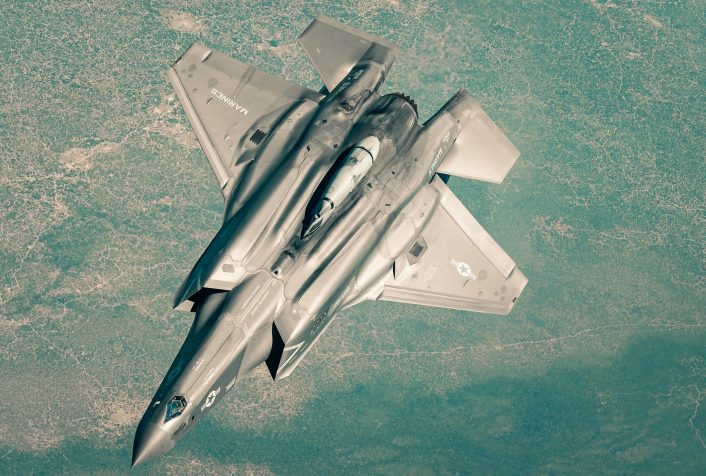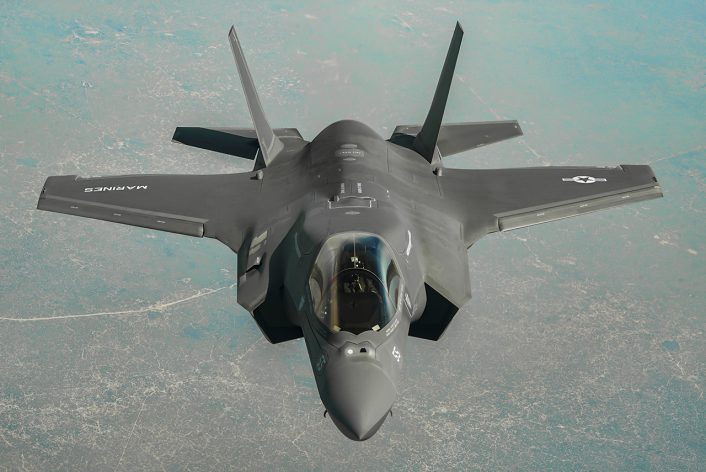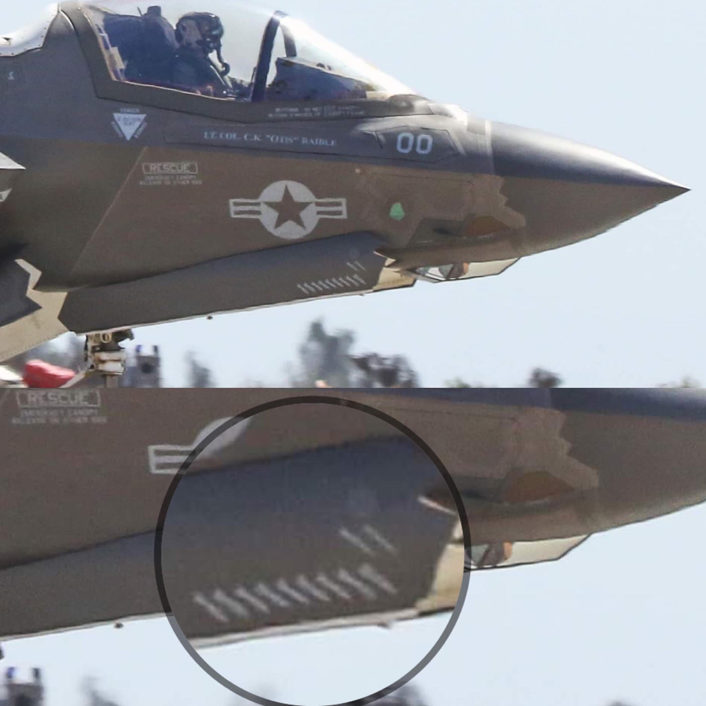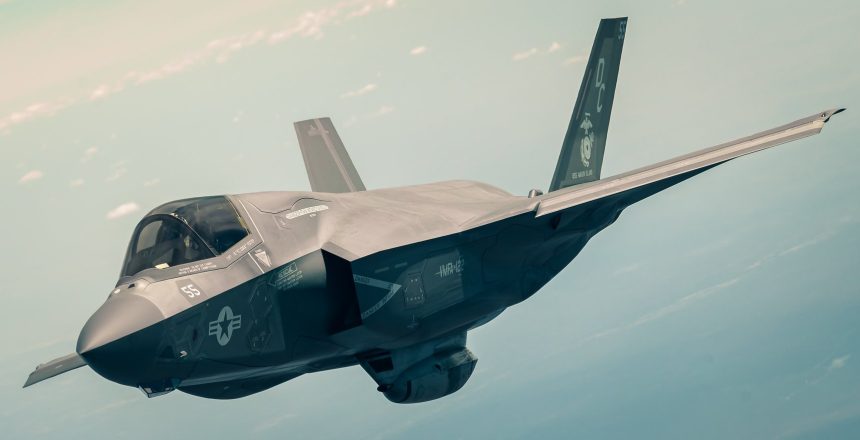The U.S. Marine Corps F-35Bs are among the combat aircraft supporting OOQ (Operation Octave Quartz) in the Horn of Africa.
Octave Quartz is the name of the U.S. operation to reposition forces in Somalia to other East Africa operating locations while maintaining pressure on violent extremists and supporting partner forces. “Joint Task Force – Quartz operations support U.S. Africa Command and international efforts that promote a peaceful and stable Somalia. Violent extremist organizations like al-Shabaab present long-term threats to U.S. and regional interests,” reads every public statement released by the U.S. DoD about the operation in the Horn of Africa.
Among the aircraft providing CAS (Close Air Support) to the U.S. forces in the region are the U.S. Marine Corps F-35B Lightning IIs assigned to Marine Fighter Attack Squadron (VMFA) 122 also known as the Flying Leathernecks, deployed off Somalia aboard amphibious assault ship USS Makin Island (LHD 8).
The Makin Island Amphibious Ready Group and embarked Marine Medium Tiltrotor Squadron 164 (Reinforced), 15th Marine Expeditionary Unit arrived off the coast of Somalia as part of the Joint Forces Maritime Component Command for Joint Task Force – Quartz, on Dec. 21, 2020.
The aircraft are, at least externally, in the standard USMC F-35B configuration: they carry radar reflectors (aka RCS – Radar Cross Section – enhancers), no external loads (sometimes the aircraft are fitted with the AIM-9 launchers) and the ventral GAU-22 25mm gun, in a GPU (Gun Pod Unit)- 9/A.

The General Dynamics GAU-22 25mm uses a unique four-barrel configuration that was developed from the highly successful five-barrel, 25mm GAU-12/U gun also built by General Dynamics. As often highlighted, although it was designed with LO (Low Observability) characteristics, the external pod unit degrades the F-35’s radar cross section making the 5th generation aircraft more visibile to radars. Still, this is acceptable (as it is for the non-stealthy AV-8B Harrier jets they will replace) for the scenarios where the U.S. Marine Corps F-35Bs are called to carry out CAS missions (read here about the so-called “third day of war” configuration) in permissive airspace.
On-call CAS may require the combat aircraft to use the gun to perform a strafing pass and lighten pressure on the friendly forces, or use PGMs to destroy insurgent vehicles or compounds. When needed CAS assets can perform the so-called “show of presence” or “show of force”. We discussed the differences between the two in this article, here’s an excerpt:
Although many consider the low and fast flyby a “show of force” (SOF) is worth remembering that this should be considered a “show of presence” (SOP): the first usually implies the use of weapons or warning gun shots (not directly on the target but in its vicinity), the second is normally carried out to scare someone off with noise. But it’s not a rule:
“For sure, what we can say is that a SOF is called when there is the need for borderline “kinematic” missions that may include release of flares or even warning shots,” says our contributor and combat pilot Alex “Gonzo” Olivares, who’s flown the Tornado in combat. “During a reconnaissance mission over Afghanistan, I was called to carry out an immediate SOP / SOF in favor of some ground troops that were under attack. On that occasion the purpose was to show the insurgents that the troops could have had the support of the air component so we released flares and also used the afterburner.”
“Dealing with SOF/SOP what I can say is that the doctrine is very broad and the way these are performed depend very heavily on the rules of engagement (ROE) of the coalition but also and above all on the scenario: for example the tactics may change if the flyby has to take place as part of a crisis scenario or during peacetime ops. In addition, a Show Of Force is usually ordered to bolster and reassure friendly forces. Moreover these flybys are military in nature but often serve both diplomatic and military purposes: they may even influence other governments or political-military organizations to refrain from belligerent acts.”
Whatever, the purpose is to disperse or intimidate the enemy. These shows are usually carried out by one aircraft, with the other one providing air cover and armed overwatch. The presence of a wingman is important as his/her role is to spot potential threats (for instance the plume of a SAM – Surface to Air Missile) and radio instructions so that the other aircraft, flying low, within the envelope of SAMs, MANPADS and small arms, can visually detect them, release flares and avoid the incoming missile or flak (anti-aircraft fire).

The gun pod was also carried by the U.S. Marine Corps F-35Bs assigned to the Marine Fighter Attack Squadron (VMFA) 211 “Wake Island Avengers”, deployed with the 13th Marine Expeditionary Unit, during the type’s first operational deployment in international waters off the coast of Djibouti in 2018.
On September 27, 2018, an undisclosed number of U.S. Marine Corps F-35B with VMFA-211, launched the first-ever combat mission by a U.S. military F-35 Lightning II Joint Strike Fighter. The long-range strikes that struck insurgent targets in Kandahar Province, Afghanistan, took off from the U.S. Navy Wasp-class amphibious assault ship USS Essex (LHD-2) on station in the Persian Gulf. The aircraft flew that first raid with the gun pod and GBU-32 JDAMs (Joint Direct Attack Munitions) in the internal weapon bays but bomb markings applied to some of the aircraft’s front landing gear door showed two different types of PGMs (Precision Guided Munitions): the GBU-12 500-lb LGBs (Laser Guided Bombs) on the top row, and GBU-32 JDAMs (bottom row).

Anyway, back to the current operation in the Horn of Africa , while the Pentagon has confirmed that the F-35Bs from USS Makin Island are flying armed patrols over Somalia it’s not clear whether they have carried out any of the recent airstrikes on al-Shabaab, the Somali terrorist group that attacked Manda Bay Airfield, Kenya, also known as “Camp Simba”, a base used by both U.S. and Kenyan forces, on Jan. 5, 2020: the U.S. Africa Command news updates don’t provide details about the assets in the airstrikes. And, it’s also worth noticing, that U.S. Air Force F-16CM are also supporting OOQ.
An #AirForce F-16 Fighting Falcon based in the Central Command area of operations conduct armed aerial patrols in #Somalia … https://t.co/cLo0ETviqZ pic.twitter.com/e8RH285VYv
— DVIDSHub (@DVIDSHub) January 13, 2021









